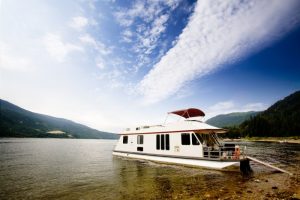
Sleeper Trains and Overnight Travel Guides unlock a world of adventure, offering unique travel experiences beyond the ordinary. This exploration delves into the practicalities, pleasures, and potential pitfalls of overnight journeys, whether you’re a budget-conscious backpacker or a luxury traveler seeking a unique experience. We’ll examine the diverse options available, from the romance of traversing continents by sleeper train to the practicality of overnight buses and ferries.
The aim is to equip you with the knowledge and resources to plan unforgettable overnight trips.
From detailed comparisons of sleeper train amenities across various countries to practical packing lists and money-saving tips, we’ll cover everything you need to know to make the most of your overnight journey. We’ll also discuss alternative overnight transportation options, weigh their environmental impacts, and explore unique, less-travelled routes. Ultimately, this guide aims to help you make informed decisions and plan a safe, comfortable, and budget-friendly overnight adventure.
Sleeper Train Experiences
Embarking on a journey by sleeper train offers a unique blend of adventure and comfort, a far cry from the sterile environment of an airplane or the cramped confines of a bus. This mode of transportation allows for a slower, more immersive travel experience, transforming the journey itself into a part of the adventure. The following sections delve into the specifics of sleeper train travel, comparing amenities, sharing personal experiences, and providing practical itinerary examples.
Sleeper Train Amenities Across Countries
The amenities offered on sleeper trains vary considerably depending on the country and the class of service. In Europe, particularly in countries like Austria, Germany, and Switzerland, you can often find well-appointed compartments with comfortable beds, en-suite facilities (in some cases), and sometimes even dining cars offering regional cuisine. These trains often prioritize luxury and comfort, reflecting a long tradition of rail travel.
In contrast, sleeper trains in Southeast Asia, such as those operating in Thailand or Vietnam, may offer a more basic level of comfort, focusing on affordability and practicality. While private compartments are available, shared compartments are common, and amenities might be more limited, but the experience often boasts a vibrant local flavor. In India, the sheer scale of the rail network means a wide range of options, from budget-friendly general compartments to more luxurious AC compartments with private cabins.
The level of amenity generally correlates with the price paid.
Personal Anecdotes from Sleeper Train Journeys
During a journey across the Swiss Alps on the Nightjet, the breathtaking scenery visible from my window as the train snaked through mountain passes was unforgettable. The comfortable compartment, complete with a small sink and privacy, allowed for a restful night’s sleep. However, on a sleeper train in Vietnam, the constant rocking of the train made sleep somewhat challenging, and the shared compartment, while lively, lacked the privacy of the Swiss experience.
The unexpected highlight was the camaraderie developed with my fellow passengers. These contrasting experiences underscore the diverse nature of sleeper train travel, each offering unique advantages and disadvantages.
Sample Multi-City Sleeper Train Itinerary
This itinerary focuses on a hypothetical journey across Europe, showcasing the potential of sleeper trains for multi-city trips:Day 1: Depart from Berlin, Germany (18:00) on the Nightjet to Vienna, Austria. Estimated travel time: 12 hours.Day 2: Arrive in Vienna (06:00). Explore Vienna during the day. Depart Vienna (20:00) on the Nightjet to Venice, Italy. Estimated travel time: 9 hours.Day 3: Arrive in Venice (05:00).
Explore Venice. Depart Venice (21:00) on a night train to Munich, Germany. Estimated travel time: 8 hours.Day 4: Arrive in Munich (05:00). Explore Munich.This is a simplified example; actual schedules and availability may vary depending on the season and specific train operator. Thorough research and booking in advance are essential.
Cost-Effectiveness of Sleeper Trains vs. Other Travel Modes
The cost-effectiveness of sleeper trains varies greatly depending on the route and the comparison. In some cases, they can offer a significant advantage over flights, especially when considering the cost of airport transfers and the time saved by not having to navigate airport security. However, for shorter distances, buses might be a cheaper alternative. Flights generally offer the fastest travel times, but are often the most expensive.
| Country | Sleeper Train Cost (Estimate) | Flight Cost (Estimate) | Bus Cost (Estimate) |
|---|---|---|---|
| Germany – Austria | €80-€150 | €100-€250 | €40-€70 |
| Thailand – Laos | $30- $70 | $150- $300 | $20- $50 |
| India (Delhi – Mumbai) | ₹1500-₹5000 | ₹4000-₹10000 | ₹800-₹2000 |
*Note: These are rough estimates and actual costs can vary widely based on season, booking time, and specific route.*
Overnight Travel Planning

Overnight travel, whether by sleeper train or other means, offers a unique blend of adventure and efficiency, allowing you to maximize your time and potentially save on accommodation costs. However, the experience can vary greatly depending on individual needs and preferences. Careful planning is crucial for a successful and comfortable journey.Overnight travel presents a compelling alternative to traditional daytime journeys, particularly for long distances.
It eliminates the need for an overnight hotel stay, saving both time and money. However, the suitability of overnight travel hinges significantly on the traveler’s priorities and travel style.
Benefits and Drawbacks of Overnight Travel for Different Traveler Types, Sleeper Trains and Overnight Travel Guides
Budget travelers often find overnight travel incredibly appealing due to the elimination of hotel costs. Families can benefit from the shared experience and potential cost savings, though managing children overnight requires careful consideration. Luxury travelers may find the premium sleeper cabins on some routes a worthwhile investment, offering a comfortable and relaxing travel experience. Conversely, drawbacks include potential discomfort for those unaccustomed to sleeping in transit, the inability to fully appreciate the scenery during the night, and the potential for disruptions to sleep.
Budget travelers might find themselves sacrificing comfort for cost-effectiveness, while families might face challenges related to managing children’s needs in a confined space. Luxury travelers, while enjoying superior comfort, may still experience some degree of disruption to their sleep.
Packing Essentials for a Comfortable Overnight Sleeper Train Journey
Proper packing is essential for a comfortable overnight journey. Items to consider include comfortable clothing (loose-fitting pajamas, warm socks), toiletries (travel-sized items are ideal), a sleep mask and earplugs (to block out light and noise), a neck pillow (for added comfort), a small blanket or shawl (for warmth), a book or e-reader (for entertainment), and any necessary medications. Don’t forget essential documents such as tickets and identification.
A reusable water bottle is also recommended for staying hydrated. Consider a small, lightweight backpack or tote bag to carry these items easily.
Step-by-Step Guide for Booking Sleeper Train Tickets
Booking sleeper train tickets involves several steps. First, research available routes and schedules. Next, compare prices from different providers or booking platforms to find the best deals. Consider traveling during off-peak seasons or weekdays for potential discounts. Once you’ve found a suitable option, carefully review the booking details, including the cabin type and any included amenities.
Pay attention to cancellation policies and ensure you understand the terms and conditions. Finally, confirm your booking and receive your ticket(s) – either electronically or physically, depending on the provider. Be wary of third-party booking sites that may charge excessive fees or offer misleading information. Always book directly with the train operator whenever possible to avoid such issues.
Safety Tips and Precautions for Solo Female Travelers on Overnight Sleeper Train Journeys
Solo female travelers should prioritize safety when undertaking overnight sleeper train journeys.
- Inform someone of your itinerary and expected arrival time.
- Choose a well-lit and populated carriage.
- Avoid consuming excessive alcohol.
- Keep valuables close and secure.
- Be aware of your surroundings and trust your instincts.
- Consider purchasing a travel safety device such as a personal alarm.
- Engage with train staff if you feel uneasy.
Exploring Alternative Overnight Transportation: Sleeper Trains And Overnight Travel Guides

Overnight travel offers a unique blend of efficiency and adventure, allowing you to maximize your time and potentially experience a different perspective on the journey itself. While sleeper trains are a popular choice, several other modes of transport offer their own distinct advantages and disadvantages. This section will compare and contrast these options, focusing on their environmental impact and exploring some lesser-known alternatives.
Sleeper Train versus Bus and Ferry Travel
Sleeper trains, buses, and overnight ferries each provide a distinct travel experience. Sleeper trains generally offer more privacy and comfort, with individual compartments or cabins, often including amenities like beds and restrooms. Buses, while more affordable, typically provide less personal space and comfort, with reclining seats being the norm. Overnight ferries, depending on the class of travel, can range from basic seating to private cabins, offering a unique perspective of the journey with potential sea views.
The environmental impact varies; trains generally have a lower carbon footprint per passenger than buses, while ferries can be highly dependent on fuel type and efficiency. Bus travel often involves more stops and slower travel times compared to trains. Ferry travel times are highly dependent on the distance and sea conditions.
Environmental Impact of Overnight Travel Options
The environmental impact of overnight travel is a significant consideration. Trains, powered by electricity (ideally from renewable sources) or more efficient diesel engines, generally have a lower carbon footprint per passenger kilometer than buses or planes. Buses, particularly those using older diesel engines, contribute significantly to air pollution. Ferries, while offering scenic routes, rely heavily on fossil fuels, with their environmental impact varying based on fuel efficiency and the size of the vessel.
Choosing electric or hybrid options whenever available significantly reduces the carbon footprint for all modes of transport. For example, a high-speed electric train traveling between major cities has a considerably smaller carbon footprint compared to a long-distance bus journey with numerous stops and older vehicles.
Unique Overnight Travel Experiences
The following are three unique overnight travel experiences that are not frequently discussed:
- Luxury Bus Tours: These aren’t your average coach journeys. Luxury bus tours often incorporate high-end amenities like comfortable reclining seats, onboard entertainment systems, and even en-suite bathrooms in some cases. They focus on specific routes or themes, offering curated experiences with planned stops and excursions. This offers a comfortable and relatively affordable way to see multiple destinations overnight.
- Overnight Canal Barges: Imagine drifting along tranquil waterways while enjoying the scenery and comfortable accommodations. Many canal barges offer overnight stays in quaint, renovated boats, providing a peaceful and unique travel experience, especially suitable for couples or small groups. This option provides a slow and relaxing journey with a unique perspective on the landscape.
- Private Car/RV Road Trips: While not strictly public transportation, a carefully planned private car or RV trip allows for complete customization of the overnight journey. This provides the ultimate flexibility and control over comfort, route, and stops, especially suitable for families or those seeking a highly personalized travel experience. However, it’s crucial to factor in driving fatigue and ensure safety precautions are taken.
Visual Infographic Comparing Overnight Transportation
The infographic would be a horizontal bar chart comparing three modes of transportation: Sleeper Train, Overnight Bus, and Overnight Ferry. Each bar would be divided into three sections representing comfort, speed, and cost. Comfort would be represented by a color scale, with darker shades indicating higher comfort levels (e.g., dark green for sleeper train, light green for ferry, and yellow for bus).
Speed would be represented by the length of the bar, with longer bars indicating faster travel times. Cost would be indicated by a numerical value at the end of each bar. A key would clearly define the color scale for comfort and units for speed (e.g., km/h) and cost (e.g., $/person). The title would be “Comparing Overnight Travel Options: Comfort, Speed, & Cost.” A simple, clear design would emphasize data readability.
For example, a sleeper train bar might be long, dark green, and end with a higher cost value compared to the shorter, yellow, lower-cost bus bar. The ferry bar might fall somewhere in between in terms of length and color.
Embarking on an overnight journey, whether by sleeper train, bus, or ferry, offers a unique blend of adventure and efficiency. This guide has explored the multifaceted world of overnight travel, highlighting the benefits and challenges of each mode of transport. By carefully considering your budget, travel style, and personal preferences, you can select the option that best suits your needs and create an unforgettable travel experience.
Remember to plan ahead, prioritize safety, and embrace the journey itself – the memories made during overnight travel often prove to be some of the most enriching.
Common Queries
What are the best websites for booking sleeper train tickets?
Several websites specialize in booking international train tickets, including Rail Europe, Trainline, and Seat61. It’s advisable to compare prices and options across multiple sites.
How do I ensure my belongings are safe on a sleeper train?
Utilize secure compartments within your sleeper cabin, consider using a lockable bag or backpack, and keep valuables close at hand. It is also advisable to be aware of your surroundings and report any suspicious activity to train staff.
Are sleeper trains suitable for families with young children?
While possible, it depends on the child’s age and temperament. Consider factors like available space, potential disruptions to sleep, and the length of the journey. Some sleeper trains offer family compartments.
What are some alternative overnight travel options besides sleeper trains?
Alternatives include overnight buses, ferries (especially for island hopping), and even some long-distance flights with lie-flat seats, depending on your budget and destination.





